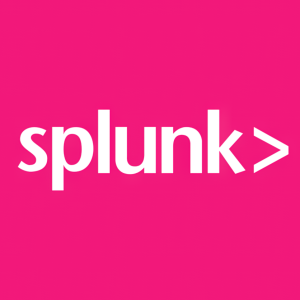State of Observability 2022 Report Reveals Organizations With Mature Observability Practices Significantly Reduce Costs While Increasing Innovation
Splunk Inc. has released the State of Observability 2022 report, showcasing significant findings from a survey of 1,250 global observability experts. Leaders in observability reportedly save over
- Leaders in observability save over $20 million in downtime costs annually.
- Observability leaders have launched 60% more products or revenue streams compared to beginners.
- 69% better mean time to resolution for downtime events due to observability investments.
- 66% of leaders report excellent visibility into application performance.
- 95% of respondents face challenges in finding staff for observability management.
- 81% of enterprises report project failures due to a lack of skilled personnel.
Global Research Shows Observability Leaders Save Over
The report reveals that the most sophisticated observability practitioners (leaders*) are able to cut downtime costs by
-
Observability leaders have launched
60% more products or revenue streams from AppDev teams in the last year compared to beginners. -
Observability leaders report a
69% better mean time to resolution for unplanned downtime or performance degradation thanks to investment in observability. -
66% of leaders report that their visibility into application performance is excellent (compared to just44% of beginners). Similarly,64% of leaders report that visibility into their security posture is excellent (versus42% of beginners). -
Twice as many leaders can detect problems associated with internally developed applications within minutes, resulting in an estimated
37% better MTTD.
“Our research confirms just how vital observability is for every business,” said
Increased cloud complexity also highlights how imperative becoming an observability leader is for all enterprises. Organizations have been moving to the cloud for more than a decade and in more recent years, hybrid architectures and multicloud operations have complicated many organizations' cloud ecosystems. Seventy percent of respondents are using multiple cloud services, and the shift to multicloud has increased complexity:
-
75% of respondents have many cloud-native applications that run in multiple environments, either multiple public clouds or a combination of on-premises and public clouds. -
Leaders are even more likely to report commonly running cloud-native applications (
92% versus68% of beginners), -
36% of organizations (and47% of leaders) that use the public cloud to run internally developed applications use three or more different public clouds today, and67% expect to do so within 24 months.
While the challenges of observability are global, the report reveals that there are significant variations across countries:
-
Canadian organizations trail in their observability journey:
79% are beginners (versus58% averaged across other countries) and just2% are leaders (versus10% in the rest of the world). -
French organizations more often report that their investments in AIOps technologies have helped them achieve lower mean time to resolution (MTTR) (
58% versus43% averaged across other countries). -
Japanese organizations have had noteworthy success using AIOps technologies to help solve recurring issues in their environment:
74% report that this has been a benefit of AIOps, versus a55% average across other countries. -
Indian organizations are further along in the observability journey: Only
29% are rated as beginners, versus62% on average across other countries.
For organizations across the globe looking to invest in observability, a lack of staff is one of the biggest hindrances in improving observability. Among respondents,
“Organizations that use the right observability tools and practices and build to attract talent stand the best chance of becoming leaders in observability,” said Xanthos. “By tackling data volume and variety with AI, organizations can alleviate staffing concerns, while at the same time investing in skills training to draw in the very best talent available. Consolidating vendors and rationalizing tools will also allow companies to curate the vendor and tool set that gives them the most visibility with the least drag, lessening the potential for staff burnout in the process.”
For more insights and recommendations from The State of Observability 2022, please visit the Splunk website.
*The report defines observability leaders as organizations with 24 months of experience with observability and which have the ability to correlate data across all observability tools, have made progress with vendor rationalization, and have begun to adopt AI/ML technology within their observability toolsets.
Methodology
The global survey was conducted from early-February through
About
Splunk, Splunk>, Data-to-Everything, D2E and Turn Data Into Doing are trademarks and registered trademarks of
View source version on businesswire.com: https://www.businesswire.com/news/home/20220517005412/en/
press@splunk.com
Investor Contact
ir@splunk.com
Source:
FAQ
What are the key findings from Splunk's State of Observability 2022 report?
How much downtime costs do observability leaders save according to the report?
What percentage of products do observability leaders launch compared to beginners?
What staffing challenges does the State of Observability 2022 report highlight?







